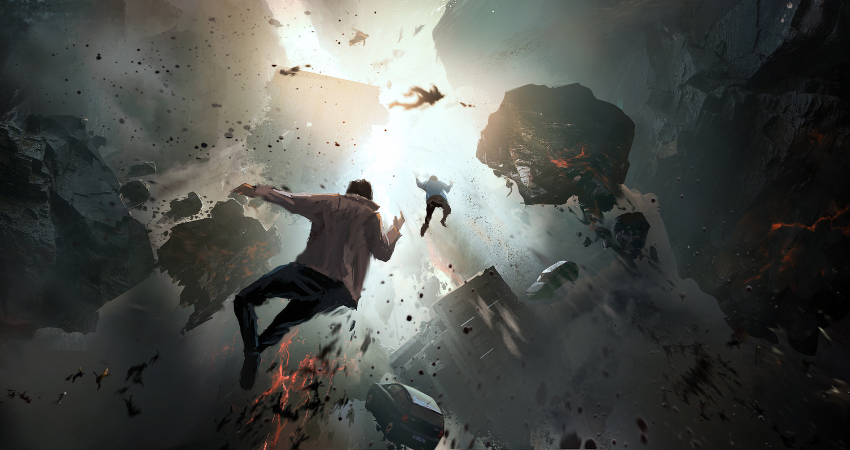Invincible wallpaper isn’t just about covering walls anymore—it’s about transforming your space into a statement. And when we talk about “Invincible Wallpaper,” we’re not only talking about stunning visuals but also durability, functionality, and a professional finish that lasts. If you’ve ever wondered how to bring this stylish upgrade to life in your home, you’re in the right place. Let’s break down everything you need to know, step by step.
Understanding Invincible Wallpaper
What is Invincible Wallpaper?
Invincible wallpaper so tough, it can resist scratches, moisture, and everyday wear while still looking sleek and modern. That’s what Invincible Wallpaper offers. Unlike traditional paper-based options, Invincible Wallpaper is often made from high-performance vinyl or fabric-backed materials that stand up to high-traffic areas, occasional bumps, and even mild cleaning products.
Think of it like the superhero of wall coverings—flexible yet robust, beautiful yet practical. Whether it’s in your living room, hallway, or kitchen, Invincible Wallpaper becomes part of the wall itself rather than a delicate layer you need to constantly worry about.
Beyond durability, it offers design freedom: bold textures, matte or glossy finishes, and countless patterns from subtle neutrals to striking geometric prints. No wonder homeowners and interior designers alike rave about it.
Plus, it’s environmentally friendly. Many modern Invincible Wallpapers are made from non-toxic materials, low in VOCs (Volatile Organic Compounds), and even recyclable. It’s style without guilt.
Key Benefits of Invincible Wallpaper
So, why choose Invincible Wallpaper over regular wallpaper or paint? The reasons go far beyond looks.
-
Durability: It withstands scratches, moisture, and fading much better than traditional wallpaper.
-
Easy Maintenance: Most types are wipeable, meaning stains or fingerprints come right off with a damp cloth.
-
Luxury Feel: Its thickness and quality give walls a high-end, tactile finish.
-
Versatility: Works in living rooms, hallways, kids’ rooms, and even semi-damp areas like bathrooms or kitchens.
-
Longer Lifespan: Properly installed and maintained, Invincible Wallpaper can last over a decade, saving time and money in the long run.
One underrated benefit? It can help cover minor wall imperfections thanks to its thicker, often textured material—something thin wallpapers can’t do as well.
All these perks make Invincible Wallpaper an investment, not just a decoration. It brings practical beauty that truly pays off over time.
Different Types and Finishes Available
Just like paint finishes, Invincible Wallpaper comes in a wide variety of styles and textures to fit your aesthetic.
-
Vinyl-coated: Ideal for high-traffic and moisture-prone areas.
-
Fabric-backed vinyl: Offers extra strength and a more luxurious feel.
-
Textured finishes: Adds depth, shadow play, and hides imperfections.
-
Matte: Soft, elegant, and perfect for modern or minimalist spaces.
-
Glossy or metallic: Reflects light, making spaces look larger and more dynamic.
Don’t overlook specialty types like acoustic wallpaper (which reduces sound) or peel-and-stick variants for DIY enthusiasts. With so many choices, it’s easy to find a style that complements your furniture, flooring, and lighting.
Choosing the right finish isn’t just about style—it also affects cleaning, durability, and installation. For instance, glossy finishes are easier to clean, while matte hides wall blemishes better.

Preparing for Installation
Gathering Essential Tools and Materials
Before you even unroll your first panel, prep work is crucial for a smooth installation. Here’s a quick list of essentials:
-
Measuring tape
-
Pencil and straight edge
-
Level or plumb line
-
Sharp utility knife or snap-off blade
-
Wallpaper smoother or squeegee
-
Adhesive brush or roller
-
Seam roller
-
Clean sponge or cloth
-
Step ladder
-
Adhesive (specific to your wallpaper type)
If you’re installing fabric-backed or thick vinyl wallpaper, you might also need heavy-duty paste, which ensures strong adhesion over time.
Buying high-quality tools might cost a bit more upfront, but trust us—it’ll save you countless headaches during installation.
Measuring Your Wall Space Accurately
This is where many DIYers slip up: underestimating or overestimating the wallpaper needed. Accurate measurements prevent wastage, mismatched patterns, and last-minute hardware store trips.
-
Measure the height and width of each wall.
-
Multiply height by width to find the total square footage.
-
Add 10–15% extra for pattern matching and trimming.
If your wallpaper has large or complex patterns, you may need even more to keep the seams invisible.
Marking guidelines on your wall using a level or plumb line also helps ensure your first panel hangs perfectly straight, setting the tone for the rest.
Prepping the Wall Surface for Best Results
Think of wallpaper installation like painting: the prep work often determines the final result.
-
Clean: Remove dust, grease, and dirt.
-
Repair: Fill holes or cracks with spackle and sand smooth.
-
Prime: Use a wallpaper primer or sizing solution. It prevents moisture absorption and makes future removal easier.
-
Smooth: Sand down rough patches so the wallpaper adheres flat.
Skipping these steps can lead to bubbles, peeling, or visible imperfections that ruin your effort.
Walls must also be completely dry before you begin—moisture trapped behind wallpaper can cause mold or mildew. A day’s prep work can easily add years to your wallpaper’s lifespan.
Step-by-Step Installation Process
Cutting the Wallpaper to Size
Here’s where patience meets precision. Cutting your Invincible Wallpaper panels correctly is the backbone of a professional-looking finish. Start by laying out your wallpaper on a large, clean surface—like a dining table or workbench—pattern side down. Measure the height of your wall and add 3–5 inches extra at the top and bottom. This buffer ensures you can trim to a perfect fit once the panel is on the wall.
Use a sharp utility knife or snap-off blade for every cut. Dull blades tear the paper or leave ragged edges, which can ruin your seams. If your wallpaper has a repeating pattern, always align the pattern before cutting your next strip. This avoids awkward mismatches that will catch every visitor’s eye.
A good tip? Number each panel lightly on the back with a pencil as you cut. This keeps them in order, so you’re never wondering which piece comes next when you start pasting.
Lastly, store your cut panels flat and out of direct sunlight until you’re ready to hang them. Curling or bending can make installation trickier than it needs to be.
Applying Adhesive Properly
Now, adhesive: the unsung hero of a seamless installation. The type of adhesive you’ll need depends on your wallpaper: some Invincible Wallpapers are pre-pasted (just activate with water), while others require paste-the-wall or paste-the-paper glue.
For paste-the-wall wallpaper (common with thicker vinyl and fabric-backed types), use a roller to evenly coat the wall rather than the paper itself. This method helps reduce mess and speeds up installation. For paste-the-paper wallpapers, apply adhesive evenly to the back of each panel, ensuring the edges are fully covered to prevent peeling.
Don’t rush this step. Uneven adhesive can create bubbles, ridges, or cause the wallpaper to slip down once it’s on the wall. Always let pasted panels “book” (fold glue side to glue side) for a few minutes as per manufacturer instructions; this helps the paper expand and reduces bubbling later.
One last tip? Keep a clean damp sponge nearby to wipe away drips immediately. Dried glue can damage the wallpaper’s surface, especially matte or textured finishes.
Hanging the First Panel with Precision
The first panel is everything—it sets the stage for a perfectly aligned room or a crooked disaster. Start at the corner farthest from the main light source so any seams are less noticeable.
Using your plumb line or level, draw a light vertical guideline slightly less than one panel width from the corner. This keeps the first strip dead straight even if your wall isn’t.
Carefully align the top of the panel with the ceiling, leaving your extra trim at the top. Smooth it onto the wall gently, working from the center outward to push air bubbles toward the edges. Use your wallpaper smoother or a plastic squeegee, applying firm but gentle pressure.
Once the panel is on, trim the excess at the ceiling and baseboard with a sharp blade and a metal straight edge. Remember: dull blades can tear the wallpaper, so change blades often.
Matching Patterns and Seams Perfectly
Pattern matching might sound intimidating, but with patience, it becomes almost meditative. Before you hang each new panel, hold it next to the one already on the wall. Adjust the panel up or down until the pattern aligns perfectly.
Slight overlapping or gaps ruin the seamless effect, so use your seam roller gently along the edges to ensure a flat, invisible joint. For textured or fabric-backed wallpapers, press lightly—too much pressure can crush the texture.
Work in pairs if possible: one person holds the top while the other aligns the bottom. This keeps long panels from sticking where they shouldn’t.
By the end, you’ll have a wall that looks like it’s been wrapped in a single piece of art—no obvious seams, just pure design.
Post-Installation Tips and Tricks
Removing Air Bubbles and Smoothing
Even the best installation might leave a few small bubbles, and that’s perfectly normal. For bubbles near the edge, gently lift the wallpaper and smooth them out toward the seam.
For bubbles in the middle:
-
Use a pin to prick the bubble.
-
Press out the trapped air with your smoother.
-
Wipe away any adhesive that seeps out.
Large bubbles usually happen because of uneven glue. If you see one, don’t panic: carefully lift that section, reapply adhesive, and smooth it back down.
Work from the center of each panel outward, using slow, deliberate strokes. Rushing can stretch the wallpaper, making the pattern look warped.
Cleaning Excess Adhesive Without Damage
Even pros get a bit of adhesive on the wallpaper face, but cleaning it immediately prevents staining. Use:
-
A clean, damp sponge or soft cloth.
-
Lukewarm water (not hot, which can reactivate adhesive and cause shifting).
-
Gentle dabbing motions instead of scrubbing.
On textured or matte finishes, be extra gentle. Aggressive wiping can create shiny patches where the texture gets flattened.
For stubborn spots, check your wallpaper’s care instructions; some types tolerate mild soap, while others don’t. When in doubt, always test on a leftover scrap.
Trimming Edges and Final Touches
Once your wallpaper is dry and firmly adhered, go over every seam and corner. Trim any stray fibers or uneven edges for that polished look.
Pay attention to tricky spots:
-
Around electrical outlets: remove cover plates first, then cut carefully around the opening.
-
Around windows and doors: keep the pattern aligned above and below so it flows seamlessly.
Finally, use your seam roller along every edge one more time. This final pass ensures everything is securely bonded and helps prevent lifting over time.
A fresh, clean finish transforms your room from DIY to designer-level.

Common Mistakes and How to Avoid Them
Skipping Wall Prep
This is the classic DIY error. It might feel tempting to hang wallpaper over old paint or a dusty wall—but this almost guarantees bubbles, peeling, or mold later.
Always:
-
Clean thoroughly.
-
Fill cracks.
-
Prime or size.
-
Let walls dry completely.
An hour spent prepping saves days of frustration later.
Mismatched Patterns
It’s heartbreaking to see a beautiful wallpaper ruined by misaligned patterns. Remember:
-
Buy 10–15% extra.
-
Cut each panel carefully.
-
Align at eye level, where mismatches are most obvious.
If your wallpaper has a complex repeat (like florals or geometrics), measure twice, cut once—and hang slowly.
Using the Wrong Adhesive
Invincible wallpaper’s durability often depends on using the correct adhesive. Regular paste might not be strong enough for heavy vinyl or fabric-backed types.
Always check:
-
Is it paste-the-wall or paste-the-paper?
-
Does the brand recommend a specific adhesive?
-
For humid areas, consider mold-resistant paste.
Using the right glue keeps your wallpaper looking flawless for years.


